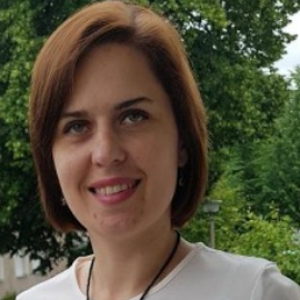Title : CaAg2 as catalyst precursor for ethylene epoxidation
Abstract:
Ethylene oxide (EO) is one of the target products for chemical industry. The supported and promoted silver is nowadays used as catalyst for ethylene epoxidation process using molecular oxygen. In order to enhance the selectivity towards ethylene oxide instead of thermodynamically favorable carbon dioxide (CO2) and water (H2O), the development of efficient catalysts is crucial. Numerous studies on epoxidation reveal that the electronic structure of the catalyst surface layer has a tremendous impact on the adsorption properties of reactants and the nature of reaction intermediates. Bimetallic catalysts (e.g. Ag–Cu, Ag–Pd) were assumed to be useful systems for tuning of catalytic activity with electronic structure. However, their advanced investigation under reaction conditions affirms that the surface changes drastically during the epoxidation and the reaction mechanism is governed by the state of the surface. The chemistry of such catalyst systems is highly dynamic and not trivial. In contrast, intermetallic compounds (IMCs) due to their ordered crystal structure can be useful model systems for understanding the catalysts’ behaviour under reaction conditions.
The binary compound CaAg2, one of the binary compounds in the system Ca–Ag with well-defined and ordered crystal structure, was tested as a catalyst for ethylene epoxidation. The conversion and selectivity towards EO increase during the induction period and afterwards remain stable for several hundreds of hours.
Based on PXRD and SEM analyses as well as calculations of adsorption energies of oxygen atoms at different partial pressures, the presence of more electronegative oxygen in the atmosphere (gas stream) and high affinity of calcium to oxygen lead to formation of calcium oxide and a significant segregation of silver to the surface. In addition, presence of carbon dioxide and water vapour from the unwanted total combustion leads to a variety of possible Ca-related products of CaAg2 oxidation, e.g. CaO, Ca(OH)2 and CaCO3. The oxidation of pristine CaAg2 towards elemental Ag is accompanied with formation of a porous 3D microstructure of intermediates and Ca-containing oxidation products. This microstructure is remarkably stable and prevents further sintering of the silver particles. The comparison of in situ formed Ag catalyst (using CaAg2 as precursor) with an Ag/CaO catalyst (prepared using a classical impregnation method) reveals the unique catalytic behaviour of the Ag-based catalyst obtained during CaAg2 oxidation.



